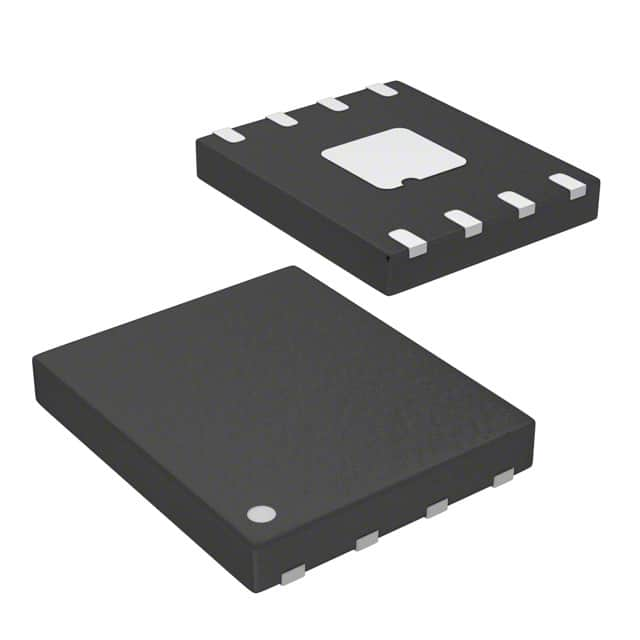Veja as especificações para detalhes do produto.

MR25H256CDFR
Product Overview
Category
MR25H256CDFR belongs to the category of non-volatile memory devices.
Use
This product is primarily used for data storage in various electronic devices, such as microcontrollers, embedded systems, and consumer electronics.
Characteristics
- Non-volatile: The MR25H256CDFR retains stored data even when power is disconnected.
- High capacity: With a storage capacity of 256 kilobits, it can store a significant amount of data.
- Fast access time: The device offers quick read and write operations, ensuring efficient data retrieval and storage.
- Low power consumption: It consumes minimal power during operation, making it suitable for battery-powered devices.
- Wide temperature range: The MR25H256CDFR operates reliably across a wide temperature range, making it suitable for various environments.
Package and Quantity
The MR25H256CDFR is available in a compact surface-mount package. Each package contains one unit of the device.
Specifications
- Storage Capacity: 256 kilobits
- Interface: Serial Peripheral Interface (SPI)
- Operating Voltage: 2.7V - 3.6V
- Operating Temperature Range: -40°C to +85°C
- Data Retention: Up to 10 years
- Package Type: SOP-8
Pin Configuration
The MR25H256CDFR features an SOP-8 package with the following pin configuration:
| Pin Number | Pin Name | Function | |------------|----------|----------| | 1 | CS | Chip Select | | 2 | SO | Serial Data Output | | 3 | WP | Write Protect | | 4 | GND | Ground | | 5 | SI | Serial Data Input | | 6 | SCK | Serial Clock | | 7 | HOLD | Hold Input | | 8 | VCC | Power Supply |
Functional Features
- High-speed data transfer: The MR25H256CDFR supports fast data transfer rates, enabling efficient communication with the host device.
- Flexible write protection: The device offers write protection functionality, allowing users to protect critical data from accidental modification.
- Sector erase capability: It allows for selective erasure of specific memory sectors, providing flexibility in managing stored data.
Advantages
- Non-volatile storage ensures data integrity even during power loss or system shutdown.
- Compact package size enables easy integration into various electronic devices.
- Wide operating temperature range makes it suitable for use in extreme environments.
- Low power consumption prolongs battery life in portable devices.
Disadvantages
- Limited storage capacity compared to higher-end memory devices.
- Relatively slower data transfer rates compared to some other memory technologies.
Working Principles
The MR25H256CDFR utilizes flash memory technology to store and retrieve data. It employs a Serial Peripheral Interface (SPI) for communication with the host device. When data is written, it is stored in non-volatile memory cells. During read operations, the stored data is retrieved and transferred to the host device via the SPI interface.
Application Field Plans
The MR25H256CDFR finds applications in various fields, including: - Automotive electronics - Industrial automation - Medical devices - Consumer electronics
Alternative Models
Other alternative models that offer similar functionality to the MR25H256CDFR include: - MR25H128CDFR: 128 kilobits storage capacity - MR25H512CDFR: 512 kilobits storage capacity - MR25H1024CDFR: 1024 kilobits storage capacity
In conclusion, the MR25H256CDFR is a non-volatile memory device with a storage capacity of 256 kilobits. It offers fast access times, low power consumption, and wide temperature range operation. The device is commonly used in various electronic applications and can be found in alternative models with different storage capacities.
Liste 10 perguntas e respostas comuns relacionadas à aplicação de MR25H256CDFR em soluções técnicas
Sure! Here are 10 common questions and answers related to the application of MR25H256CDFR in technical solutions:
Question: What is MR25H256CDFR?
- Answer: MR25H256CDFR is a specific model of a high-speed, low-power, non-volatile magnetoresistive random-access memory (MRAM) chip.Question: What are the key features of MR25H256CDFR?
- Answer: Some key features of MR25H256CDFR include a capacity of 256 kilobits, high-speed read and write operations, low power consumption, and non-volatility.Question: In what applications can MR25H256CDFR be used?
- Answer: MR25H256CDFR can be used in various applications such as industrial automation, automotive systems, IoT devices, smart meters, and medical equipment.Question: How does MR25H256CDFR compare to traditional RAM?
- Answer: Unlike traditional RAM, MR25H256CDFR is non-volatile, meaning it retains data even when power is disconnected. It also offers faster read and write speeds.Question: Can MR25H256CDFR be easily integrated into existing systems?
- Answer: Yes, MR25H256CDFR is designed to be compatible with standard microcontroller interfaces, making it relatively easy to integrate into existing systems.Question: What is the power consumption of MR25H256CDFR?
- Answer: MR25H256CDFR has low power consumption, typically operating at around 20mA during read or write operations.Question: Is MR25H256CDFR resistant to magnetic interference?
- Answer: Yes, MR25H256CDFR is designed to be highly resistant to magnetic interference, making it suitable for use in environments with strong magnetic fields.Question: Can MR25H256CDFR withstand harsh operating conditions?
- Answer: Yes, MR25H256CDFR is designed to operate reliably in a wide range of temperatures and can withstand shock and vibration.Question: What is the data retention capability of MR25H256CDFR?
- Answer: MR25H256CDFR has excellent data retention capability, with data integrity guaranteed for more than 20 years.Question: Are there any specific programming requirements for MR25H256CDFR?
- Answer: MR25H256CDFR can be programmed using standard microcontroller commands and protocols, making it easy to integrate into existing systems without significant changes.
Please note that these answers are general and may vary depending on the specific technical solution and application requirements.

